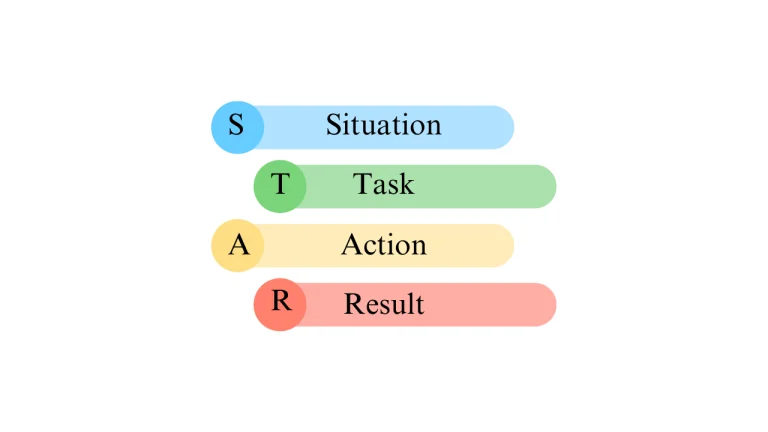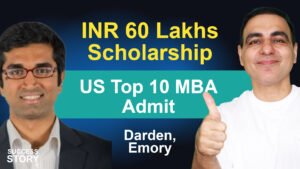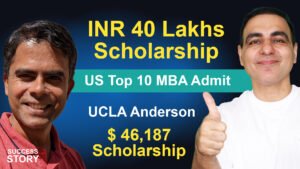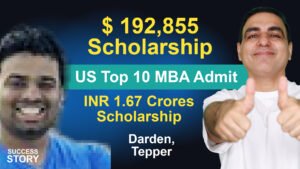Aspiring MBA candidates frequently encounter a challenging venture when confronted with interviews and essay writings during their application process. Harnessing the power of structured response mechanisms, like the STAR method, offers a prudent approach in navigating these pivotal interactions effectively. This guide aims to delineate an in-depth exploration of utilizing the STAR method, proactively assisting you in framing responses that not only resonate with your experiences but also succinctly communicate your aptitude and proficiency.
Understanding the Essence of the STAR Method
What is the STAR Method?
The STAR Method—an acronym for Situation, Task, Action, and Result—is a systematic approach to articulating responses to MBA interview questions that are often behavioral or competency-based. The method mandates focusing on a specific Situation, delineating the Task involved, explicating the Action undertaken, and finally, elucidating the Result achieved. This structured response facilitates a comprehensive and coherent narrative that effectively communicates a candidate’s skills and competencies.
Ingraining the Components: Situation, Task, Action, and Result
Ensuring familiarity and comfort with each STAR component is paramount. Situation demands a concise depiction of a scenario or challenge faced; Task requires detailing the responsibilities or objectives vested upon you; Action necessitates elaborating on the strategies or steps undertaken to navigate the situation, and Result warrants a description of the outcomes or impacts of the actions undertaken. This nuanced approach ensures a well-rounded response, illuminating your problem-solving and strategic application capabilities.
When and Why Utilize the STAR Method?
Employing the STAR method, especially amidst MBA interviews and in crafting MBA essays, ensures a lucid and potent conveyance of your experiences and competencies. The method affords candidates the leverage to methodically unfold their narratives, illuminating their skills and achievements in a tangible and relatable context, thus bolstering their candidacy.
Effectively Utilizing the STAR Method in MBA Interviews
Comprehensive Step-by-Step Utilization in Responses
Embedding STAR within your responses mandates a meticulous approach. Begin with setting the stage through the Situation, followed by unfolding the Task to establish context and stakes involved. Subsequently, delineate the Action, ensuring to underscore your role and strategy, and culminate with the Result, showcasing the impact and learning derived. This systematic unfolding ensures the interviewers perceive the depth of your experience and your strategic and analytical proficiency.
Accentuating Behavioral Aspects through STAR
Behavioral questions often seek to explore candidates’ capabilities through past experiences. Leverage STAR to depict not merely the actions undertaken but the behavioral attributes exemplified therein. Emphasize the interpersonal, leadership, and strategic thinking facets within the narrative, ensuring the response illuminates the underpinning behavioral competencies sought by the interviewers.
Embarking on Practical Applications: A Client’s Success Story
Real-world Application of STAR
Illustrating the STAR method’s utility, let’s traverse through a client’s journey in utilizing it within their MBA applications. Encountering a question regarding leadership experience during an interview, the client adeptly deployed STAR. They began by depicting a situation wherein their team was confronted with a pivotal project (Situation), followed by highlighting their role as the team lead (Task). Subsequently, they elucidated upon their strategy of inclusive decision-making and strategic alignment (Action), culminating with the successful delivery of the project and the enrichment of team cohesion (Result). This response not only communicated the client’s leadership and strategic capabilities but also their capacity for impactful execution.
Triumphing Over MBA Applications with Strategic Narration
Ensuring the strategic narration within responses, especially within MBA applications, is integral. The above-illustrated example underscores how a meticulously crafted response, rooted in the STAR method, not only communicates the sought competencies effectively but also showcases the candidate’s capacity for reflection and strategic thinking, thereby augmenting their candidacy.
Exploring and Adapting Alternative Interview Approaches
Introducing the SCAR Method
As we traverse through the STAR’s realm, it’s pivotal to also explore alternative approaches, like the SCAR method (Situation, Challenge, Action, Result). This method while akin to STAR, places a nuanced focus on the Challenges faced, allowing candidates to underscore their problem-solving capabilities and resilience, providing a slightly varied lens through which experiences can be communicated.
Pivoting the Traditional STAR: Situational Challenges and Resolutions
Exploring alternative approaches, like SCAR, affords candidates additional arsenal in navigating varied MBA interview questions, ensuring their responses remain dynamic and multifaceted. Whether through STAR or SCAR, the objective remains to illuminate candidates’ competencies and experiences in a structured and compelling manner.
Applying the STAR Method to Renowned MBA Application Questions
Tailoring Responses to Specific University Criteria
Navigating through the nuanced criteria of renowned universities’ MBA application questions requires a meticulous and tailored approach. Utilizing the STAR method, candidates can frame their experiences and accomplishments within a cohesive narrative that aligns with specific institutional expectations. For instance, an essay prompt exploring leadership experiences is not merely satisfied with a generic narrative, but seeks an exposition of situation, task, action, and result that illuminates the candidate’s leadership competencies, strategic thinking, and impact.
Ensuring Relevance and Cohesion in Answers
Cohesion and relevance in responding to MBA application questions emerge as pivotal to crafting responses that are not merely compelling but also illuminative of the candidate’s competencies and experiences. Employing the STAR method, it’s vital to weave a narrative that aligns the situation, task, action, and result in a manner that is not merely sequential but also intrinsically linked, ensuring that the response is not merely a recounting of events, but a coherent narrative that illuminates the candidate’s journey and impact.
Bridging Conceptual Knowledge with Practical Application
Linking STAR Theory to Practical Use
The potency of the STAR method is illuminated not merely in its theoretical framework but its practical applicability within MBA applications and interviews. Bridging the theoretical underpinnings of STAR with practical application entails not merely understanding the method but adeptly applying it within varied contexts, ensuring that responses are not merely structured but also reflective of the candidate’s competencies, experiences, and impacts in a tangible and compelling manner.
Ensuring Authenticity and Impact in Responses
As candidates traverse through their application journey, ensuring that their responses are not merely reflective of their experiences but also authentic and impactful is pivotal. Engaging with STAR necessitates a mindful approach that does not merely recount experiences but does so in a manner that is authentic, providing insights into the candidate’s journey, challenges, strategies, and impacts in a manner that is not merely informative but also emotionally resonant and impactful.
Preparing for Challenges and Hypothetical Situations in MBA Interviews
Navigating Through Potential Obstacles
Embarking on the interview journey, candidates often confront varied and potentially challenging questions. Navigating through these, especially hypothetical situations, utilizing the STAR method ensures that responses are not merely conjectural but are rooted in a structured framework that allows candidates to navigate through the hypothetical situation in a manner that is reflective of their strategic thinking, problem-solving capabilities, and potential impacts.
Building a Repository of Responses for Preparation
In preparation for MBA interviews, building a repository of responses, crafted through the STAR lens, enables candidates to be not merely prepared but also adept in navigating through varied questions. This repository, which encompasses varied experiences and competencies, serves as a robust preparation tool, ensuring that candidates can navigate through varied and potentially challenging questions in a manner that is reflective of their competencies and experiences.
Final Notes: Tips and Strategies for Robust STAR Practice
Crafting and Simulating Mock Responses
As we near the culmination, crafting and simulating mock responses through the STAR method emerges as a potent strategy for preparation. Engaging in this practice enables candidates to not merely understand the STAR method but also apply it across varied contexts and questions, ensuring that their preparation is not merely theoretical but also practically applicable and impactful.
Eliciting Feedback and Refining Answers
Post simulation, eliciting feedback and refining responses ensures that candidates are continuously enhancing their application and interview narratives. Engaging with feedback, whether from peers, mentors, or self-reflection, and refining responses ensures that the narratives are not merely compelling but also evolving, ensuring their relevance, coherence, and impact within the application and interview processes.





